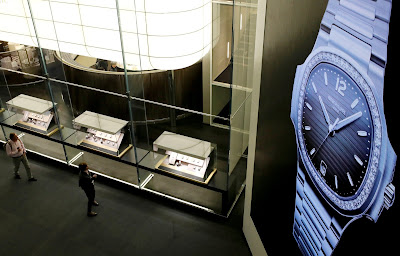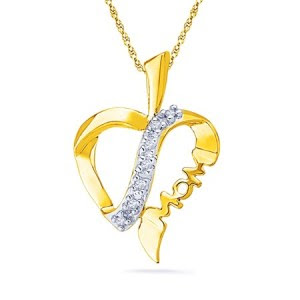Is Time Up for the World’s Largest Watch and Jewelry Fair?
In March the
halls of Baselworld, usually packed with brand representatives, buyers
and members of the media, were instead buzzing with talk of a show in
crisis.
The world’s largest watch and
jewelry fair by both exhibitors and visitors — an event held in
Switzerland that had helped brands shape the public’s perception of the
two industries for more than 100 years — had lost 75 percent of its
exhibitors in a little over a decade, dropping to 520 this year from its
2008 high of 2,087. Attendance declined, too, and organizers said later
that the 2019 event had lost money.
The
problem? Some exhibitors said the fair didn’t connect with consumers.
And, in an age of direct-to-buyer sales and ubiquitous social media,
that meant it was something like an analog solution to a digital
problem.
“Baselworld celebrates a form
of luxury rooted in the 1990s,” said Rolf Studer, joint executive
officer of the independent Swiss watch company Oris, a longtime
Baselworld exhibitor (which hasn’t committed to the 2020 show). “It’s
like a club you want to go to, but that will never let you in. Things
have changed.”
MCH Group, the
event’s Basel-based parent company and organizer of about 90 other
exhibitions including the Art Basel shows, has begun making revisions.
But events like the Salon International de la Haute Horlogerie, better
known as S.I.H.H., and the consumer-focused Watches and Wonders Miami
both announced increased visitor numbers after this year’s events. Is
all the effort just too late?
“When I
started working at Baselworld, it was essential to understand what had
gone wrong,” said Michel Loris-Melikoff, adding that he had had 830
meetings with stakeholders since he replaced Sylvie Ritter as
Baselworld’s managing director last July.
A
lack of communication seemed to be the main problem, “a lack of
listening and understanding,” he said. “During most of the meetings,
this word ‘arrogance’ was always mentioned.”
Mr.
Loris-Melikoff, a former lawyer and private banker with 20 years’
experience in large-scale events, said that, after 10 months, “I can say
that I understand the market, and that allows me to redesign the show.”
As
Baselworld 2019 closed, he announced some changes, which he expanded on
during a recent interview in London. He said exhibition fees, which are
called “surface rents” and have been a closely held secret, would be
reduced by 10 to 30 percent, and that he was planning to create an
online platform — “like LinkedIn” — that would allow brands, journalists
and consumers to interact year round. Also, he said, Baselworld would
change the show décor every year, might add exhibitions and events of
its own, and might use MCH Group’s database to attract more attendees.
He
also promised to establish an e-concierge service, managed by
Baselworld but operated by a third party, that would help make visiting
Basel cheaper — another longtime complaint from exhibitors and attendees
alike, many of whom are known to stay an hour’s drive away in Zurich or
across the border in Germany. “In the past, hotels added margins of 300
to 500 percent during Baselworld. This is not sane,” Mr. Loris-Melikoff
said. “If I manage 500 beds in a hotel, of course I have a totally
different power to negotiate the price.”
Next
year Baselworld is leaving its longtime March slot, moving to April 30
to May 5. It will immediately follow S.I.H.H., the industry’s other
major watch fair, which will be April 26 to 29 in Geneva. The two shows
have worked together on the scheduling.
But that coordinated schedule is promised
only through 2024, at least so far. And although MCH spent 430 million
Swiss francs ($423 million) refurbishing Messe Basel
— in 2013 it reopened the 1.5 million-square-foot exhibition site where
Baselworld is held — Mr. Loris-Melikoff said he was “not obliged” to
keep the show in Basel. He said it could move to take advantage of MCH’s
Art Basel contacts in Hong Kong or Miami. He said he was also planning
to do a Baselworld pop-up somewhere else (to be confirmed sometime this
summer, he said).
None of that was enough for some brands. Swatch Group announced
last July that the $50 million it had been spending at Baselworld for
everything from exhibitor fees to stand construction would be put to use
elsewhere. Breitling withdrew last month, but said it might return in
2021. (The brand, owned by the British private equity firm CVC Capital
Partners since November, also has been planning several “summits” in
locations around the world.)
For Mr.
Studer of Oris, change has been coming too slowly. He said that when
exhibition areas were left empty in March, “there were some craters that
could have been filled with new and exciting ideas, but sadly they
weren’t.”
And he said Oris had not decided about next year yet because “the
concept we have seen is not a concept, it’s just an allocation of a few
colorful pictures.”
But the 2020 show
has gotten commitments from the industry giants Rolex and Patek
Philippe, both of which still largely rely on a traditional retail
model, and the watch division of LVMH Moët Hennessy Louis Vuitton, which
includes Hublot and TAG Heuer.
“For
us it remains an important and successful event,” Thierry Stern,
president of Patek Philippe, wrote in an email. “We need to see all our
retailers and the press, and to be frank it is not easy to see them all
during the year. Here, once a year, I can see everybody in a very short
time.”
The continued presence of those
anchor brands may buy some time for Mr. Loris-Melikoff and his
management team to enact their plans. While neither Rolex nor Patek
releases sales figures, research by the Swiss investment bank Vontobel
estimated that Rolex’s 2018 sales were 5.4 billion Swiss francs, making
it the largest Swiss watch brand in the world by sales, and more than
twice the size of Omega, the next largest. The bank placed Patek
Philippe fifth with sales of 1.4 billion francs, and listed the
Baselworld exhibitors TAG Heuer, Hublot, Chopard and Bulgari among the
global top 25 by sales.
“Rolex has
responsibility for the total watch industry because they are the No. 1
player,” said René Weber, an analyst at Vontobel, which has been
monitoring the Swiss watch industry for more than 30 years. “And in fact
Rolex and Patek consider themselves to be responsible — retailers see
them and then see other brands” at Baselworld.
Brian Duffy,
chief executive of the British-based Watches of Switzerland Group of
retailers, said, “There was a need for a wake-up call and it should have
changed sooner. But what gives me the greatest optimism is very clear
support for Baselworld from Rolex and Patek that all but guarantees its
future.”
He added that many retailers
still consider the show an essential point in the watch industry
calendar: “Baselworld is and always has been a unique opportunity to get
a feel for the market.”
“Retail
organizations can now interact locally,” he said. “But there is huge
value in having everybody in the same place at once. Without Baselworld,
the industry would lose efficiency and small brands would lose an
opportunity. Nothing would be as good as having every retailer in the
world at the fair.”
Mr.
Loris-Melikoff, who said he was well into preparations for 2020, was
optimistic. After all, the emotional marketing value of an event, he
said, could never be replaced.
“We
need a strong marketplace in Switzerland for our industry,” he said.
“And if you want to be in this market, you have to be present.”
If you’re looking for some top tips on buying your vintage style engagement rings, then please contact us in the comment sections.





Comments